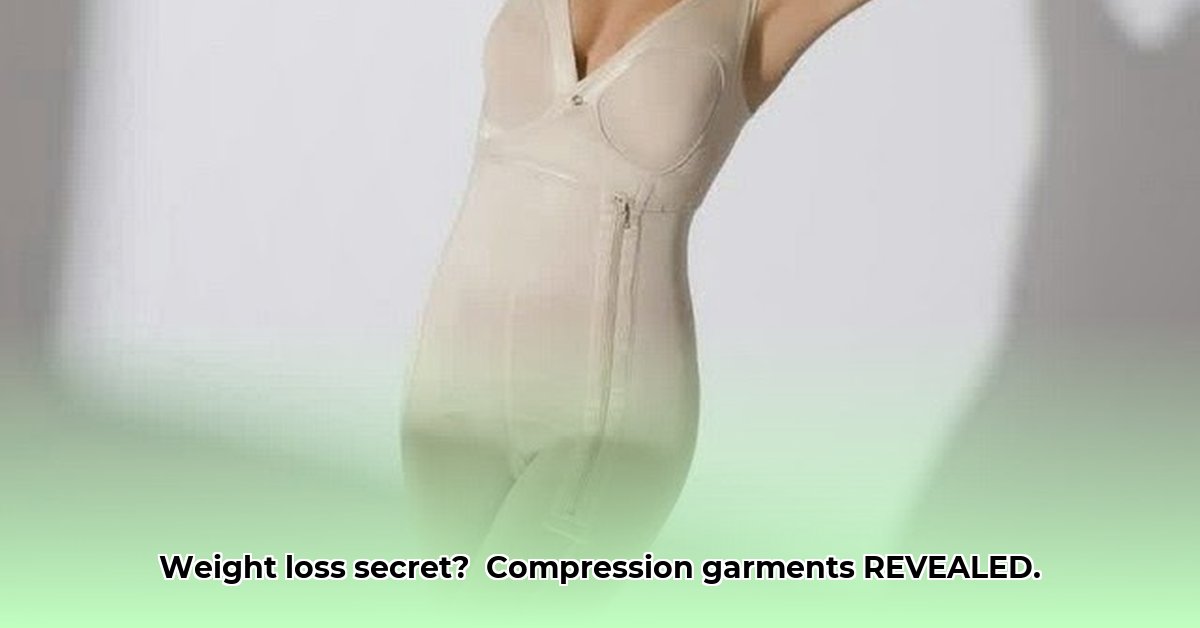
Understanding the Claims Surrounding Compression Garments
The market for compression undergarments promoting weight loss is booming, fueled by claims of effortless weight reduction. These claims often portray a simple solution to a complex problem: achieving and maintaining a healthy weight. However, the reality is more nuanced. While compression garments might offer some minor benefits in specific contexts, they are not a magic bullet for significant weight loss. Many individuals are drawn to the promise of passive weight loss – losing weight without the effort of diet and exercise – but this is unrealistic.
The Allure of Passive Weight Loss
The appeal of passive weight loss is understandable. Advertising often depicts individuals achieving dramatic weight loss simply by wearing a compression garment. This notion of effortless weight management is powerfully attractive, but ultimately misleading. It's crucial to understand that sustainable weight loss requires a multifaceted approach that includes diet and exercise.
Does wearing a compression garment lead to weight loss? While some users report a temporary decrease on the scale due to increased sweating and water loss, this is not true fat loss. This temporary weight loss is analogous to squeezing a sponge – the water is expelled, but the sponge itself remains unchanged.
What the Research Shows: Separating Fact from Fiction
Scientific research on compression garments and weight loss has yielded mixed results. Some studies suggest minor advantages, primarily in reducing post-surgical swelling and potentially improving athletic performance by reducing muscle soreness. However, credible evidence supporting significant weight loss through the sole use of compression garments is lacking.
Limited Evidence for Weight Loss
Studies indicating a potential increase in fat burning during exercise while wearing compression garments are often short-term, lacking the longitudinal data necessary to assess lasting effects. Furthermore, there's no conclusive evidence that these garments boost basal metabolic rate (BMR), the number of calories your body burns at rest. While a higher BMR could contribute to weight loss, current research doesn't definitively support this connection.
Dr. Emily Carter, MD, a leading bariatric surgeon at the University of California, San Francisco, states, "While compression garments can be helpful for post-surgical swelling and comfort, they should not be viewed as a weight loss solution. A balanced diet and regular exercise remain the cornerstones of successful weight management.”
Realistic Expectations and Potential Benefits
Compression garments should not be viewed as a primary weight loss strategy. They may play a minor supporting role, enhancing comfort during exercise or providing post-surgical support, but they will not effect significant, long-term weight change. A comprehensive approach incorporating a healthy diet and regular exercise remains vital for durable weight loss.
Specific Contexts Where Benefits May Be Seen
The potential benefits of compression garments vary significantly depending on the individual and their circumstances:
| Group | Potential Benefits | Limitations |
|---|---|---|
| Post-Surgical Patients | Reduced swelling, faster recovery | Not a primary weight loss solution; consult with surgeon. |
| Athletes | Possible minor performance improvement (less muscle soreness) | No guarantee of significant calorie burning or weight reduction |
| Individuals Seeking Weight Loss | May provide comfort during exercise, possible psychological boost | No direct impact on fat loss; not a replacement for diet & exercise |
Compression Garments After Bariatric Surgery: A Closer Look
Following bariatric surgery, rapid weight loss often leads to excess skin, discomfort, and swelling. Compression garments might offer some relief in these contexts. They provide support, potentially improving posture and reducing the appearance of loose skin. However, it's crucial to understand their limitations.
Benefits and Limitations After Bariatric Surgery
Benefits:
- Reduced Swelling: Improved circulation minimizes post-operative swelling.
- Increased Comfort: Support alleviates discomfort and pain.
- Improved Posture: Firmer abdomen can aid posture.
- Potential for Skin Retraction: While promising, further research is needed to confirm this benefit.
Limitations:
- Not a Weight-Loss Solution: They do not directly contribute to weight loss.
- Limited Long-Term Effects on Skin: Long-term impacts on skin elasticity remain unclear.
- Individual Results Vary: Results depend on factors like body type and surgical procedure.
- Proper Fit and Use Are Essential: Improper use can lead to complications.
Choosing the Right Compression Garment
Selecting the appropriate garment is paramount. Before purchasing, consider:
- Consult Your Surgeon: Personalized recommendations are essential.
- Material Matters: Breathable, hypoallergenic materials minimize discomfort.
- Proper Fit is Crucial: A well-fitting garment offers support without restriction.
- Gradual Introduction: Begin with short wear periods, gradually increasing duration.
The Final Verdict: A Balanced Perspective
Compression undergarments offer limited benefits for weight loss. Their value primarily lies in improving circulation, reducing post-surgical swelling, and potentially enhancing athletic performance. They can be used as a supplemental tool within a holistic weight management plan, but should never replace a healthy diet and regular exercise. Avoid products making exaggerated claims; prioritize sustainable weight loss strategies for long-term health.